- Home
- entertainment
- news
- 13 wild behind-the scenes details from 'Squid Game: The Challenge' prove the production was a massive undertaking
13 wild behind-the scenes details from 'Squid Game: The Challenge' prove the production was a massive undertaking
Palmer Haasch

- "Squid Game: The Challenge" is a reality series based on the Korean drama "Squid Game."
- Netflix released a documentary about the making of the series.
Netflix just wrapped the first season of its "Squid Game" reality spinoff series, "Squid Game: The Challenge" — and it was a huge undertaking.
The streaming service released a 30-minute documentary about the making of the series, featuring interviews with its game designers, art and construction crew members, and executive producers. The behind-the-scenes look at the show reveals what it took to create a world just as immersive as that of "Squid Game" — one that hundreds of real people could actually live in.
Here are 13 details about the making of the series from the documentary, titled "Making Squid Game: The Challenge."
Developing the ink explosions for eliminated players was a complex process.
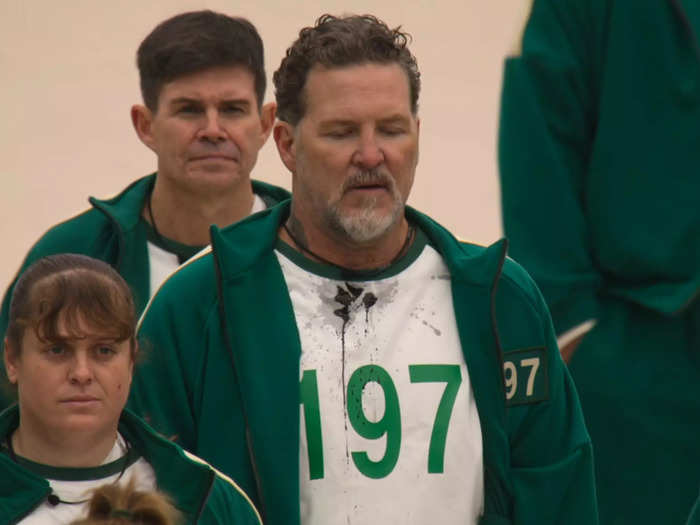
When players are eliminated on the show, they obviously don't die like in the original drama. Rather, a splash of black ink explodes across their chest — and frequently, they pantomime falling to the ground after that.
In order to create the effect, players wore a vest underneath their t-shirts and tracksuits that contained air canisters and the nozzle from which the ink would explode.
But the effect also involved what the players were wearing on top. Costume designer Rikki Finlay explained in the documentary that they had to strip the players' t-shirts of starch by immersing them in vinegar and washing them. Doing so allowed the ink to burst through.
Executive producer Stephen Yemoh explained that the black ink was a reference, in part, to squid ink.
The guards were trained on how to move and act.
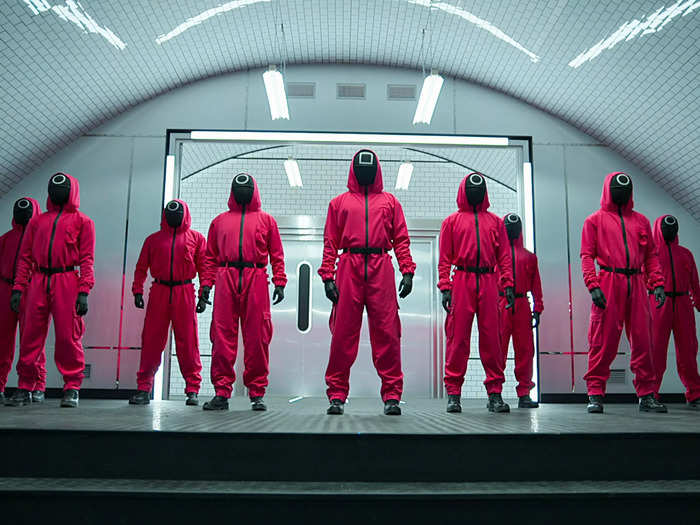
Yemoh explained in the documentary that the actors playing the game's guards trained with a choreographer, who ensured that they all walked and stood in the same way.
New games were meant to illustrate, and riff on, the interpersonal tension between players.
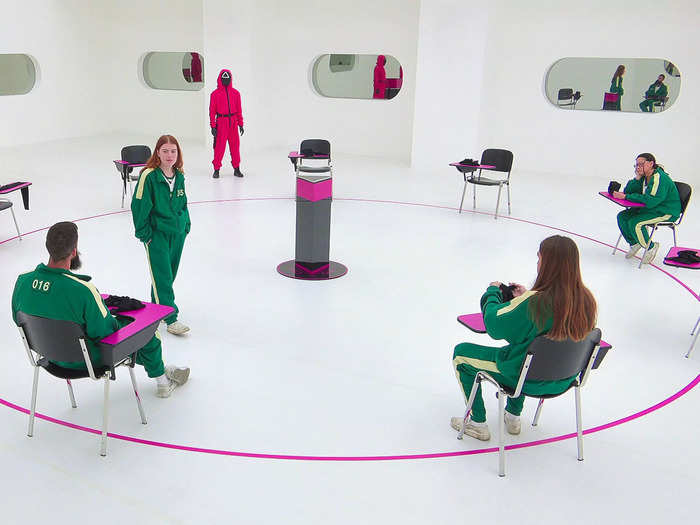
Unlike "Squid Game," the drama, producers couldn't write out the drama and tension that makes good television. Instead, they had to use new games in order to up the ante among the contestants, executive producer Stephen Lambert said in the documentary.
"These are moments where individuals or groups of people are asked to make very difficult decisions that test their morality, also their strategy," executive producer Tim Harcourt said.
The "Red Light, Green Light" doll was 3D printed.
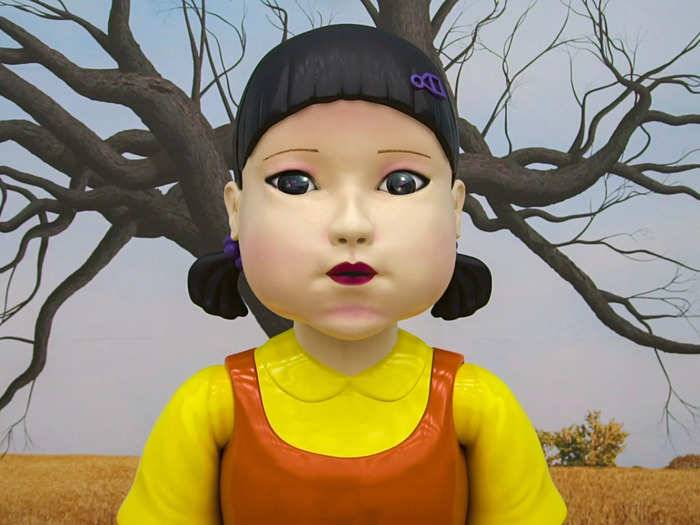
Obviously, the doll (also known by the name "Young-hee") was modeled after the one in the original "Squid Game."
Toni Ireland, an executive producer, said in the documentary that the doll was made using 3D printing, and has mechanical elements that allow her head to rotate.
"Red Light, Green Light" used motion-tracking technology and over a dozen cameras.
Bryn Williams, the games technical consultant on the show, said that the team developed the motion-tracking software for the "Red Light, Green Light" game by first building a simulator that could handle the scale of a 456-player game.
Every contestant was wearing a tracker during the game, Ireland said. There were 16 cameras observing the players looking for movement.
Ireland explained that when it came down to deciding eliminations, the show's adjudicators would vet all "events" — any ambiguous motions on the playing field.
Unlike the original "Squid Game," the players don't play "Red Light, Green Light" on sand.
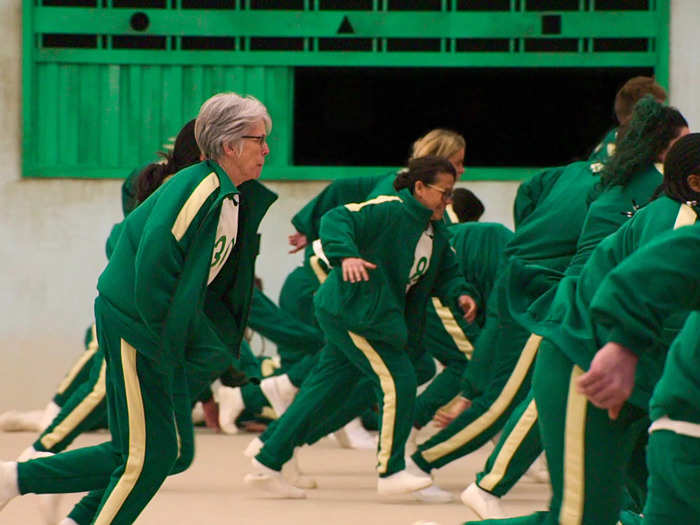
Art director Luke Fuller explained in the documentary that sand would have set off the motion detectors as players kicked it up. Instead, the production put down a carpet that looked like sand.
The player bathrooms were made partially from custom-colored tiles.
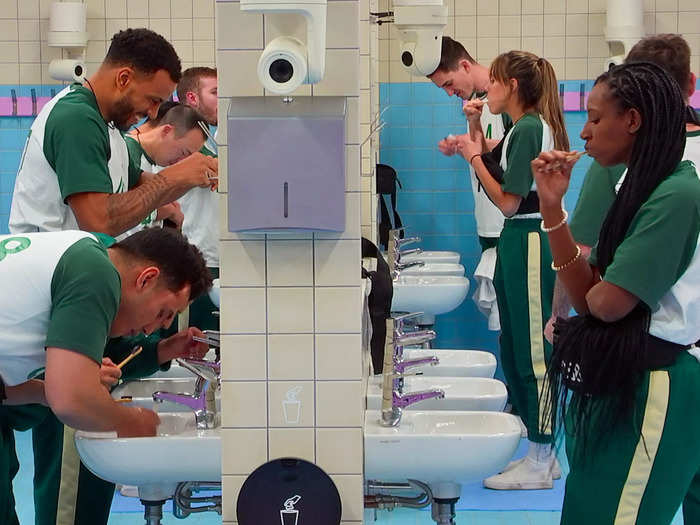
In addition to having to make the shower and toilet spaces functional compared to the original drama, the production also had a difficult time exactly replicating the look of the bathrooms in the show.
Art director Luke Fuller said in the documentary that it was particularly difficult to get the right colors for the bathroom tiles. In the end, the production ended up custom ordering the tiles in a specific color and having 60,000 of them custom-made and shipped from Spain.
But the bunk beds were even trickier.
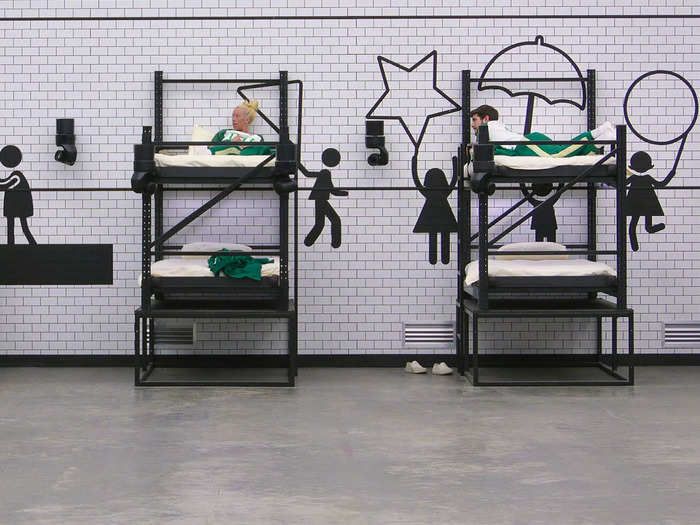
According to Fuller, every bunk bed on the show was custom-made down to the mattresses, which were hand-sewn.
The production tested multiple formulas for the dalgona candy.
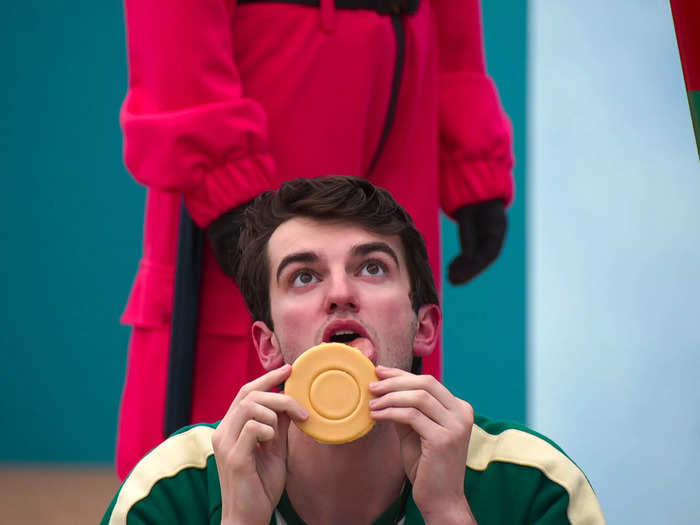
Long before recording, the crew had to test out different formulas for the dalgona candy to ensure that it wouldn't break quickly or get too sticky, Eaman Kadhim, senior development chef at Tastehead, said in the documentary.
That included testing different formulas, ways to store the candy, and different methods of making it. In order to make them uniform, they also had to ensure that the shapes were imprinted at the same time the candy set, Tastehead project manager Lucy Rock said.
The production replaced tug-of-war from the original drama because it was hard to make it a fair game.
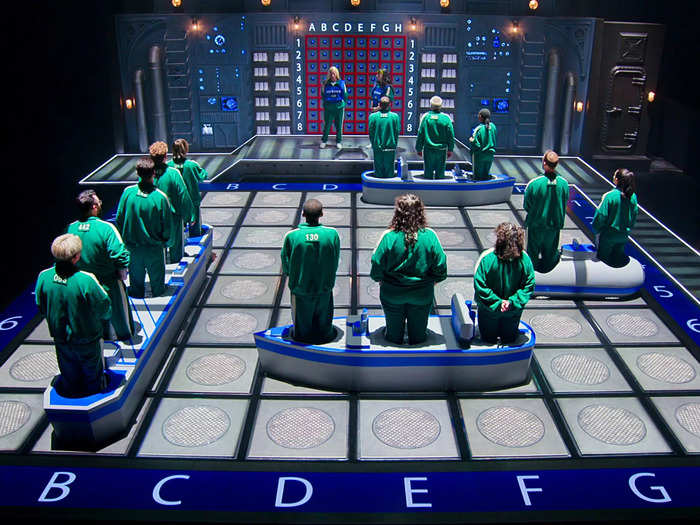
"We couldn't really figure a way to do it logistically or fairly, and I think it was one we all let go," executive producer Tim Harcourt said.
That's why the show replaced it with warships — a "Battleship"-like team challenge.
The "marbles" set featured some replicated props from the original show.
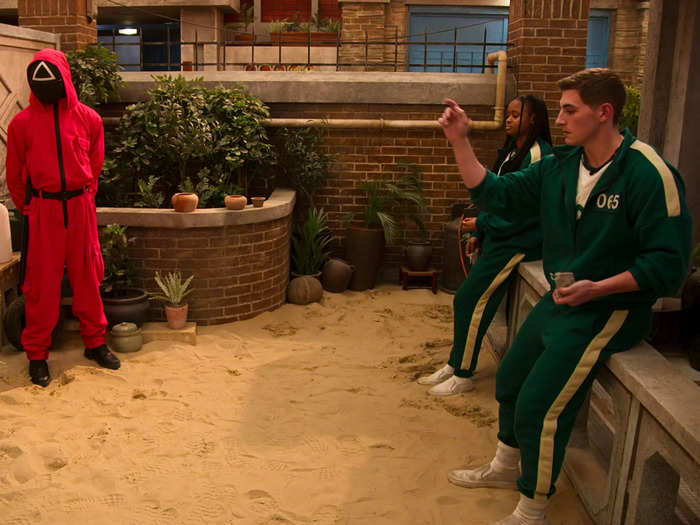
The art crew attempted to recreate multiple props, in addition to the general aesthetic, of the original "Squid Game" on the marbles set.
"There was a lot of sourcing of traditional Korean pots and pans and things like that 'cause we wanted to be as true to the drama as we could be," Fuller, the art director, said.
Some props, he said, were near-identical to the show, including a tricycle and a Hoover vacuum on the set.
A structural engineer had to sign off on the glass bridge.
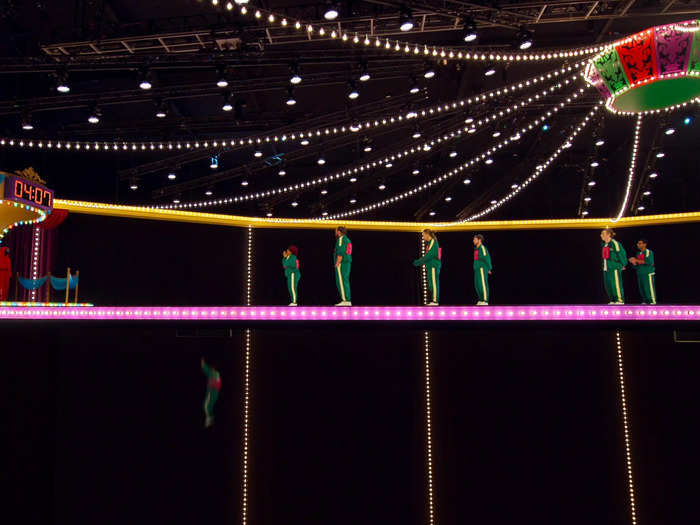
Initially, the game team tried to build the breakable glass plates out of sugar glass, games designer Ben Norman said. However, it still posed a danger to players, so they moved on to trap doors.
The trap doors needed to be larger than in the original "Squid Game," Norman said — and it made the entire bridge larger as a result.
"This thing ended up being like a 32-meter-long bridge that weighed three or four tons and had to have a structural engineer to sign it off," Norman said in the documentary.
The production got the place settings for the dinner from the same supplier as the original show.

"For the Last Supper, we wanted to be as true and as realistic to the original set as possible. There's really intricate details on the table," Fuller, the art director, said. "We found the supplier that supplied the drama, and we replicated them as closely as we could."
Popular Right Now
Popular Keywords
Advertisement